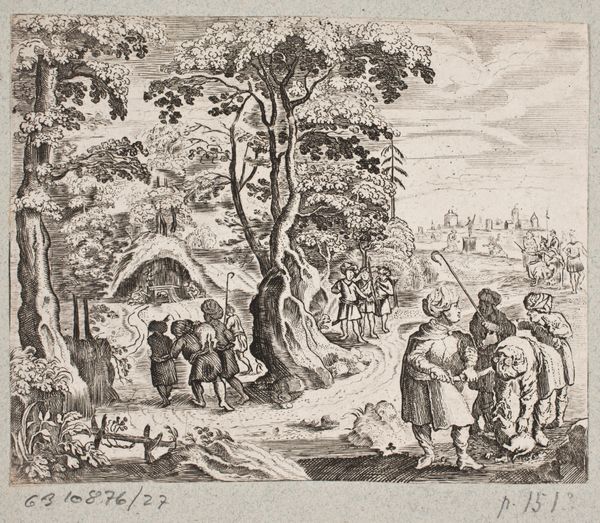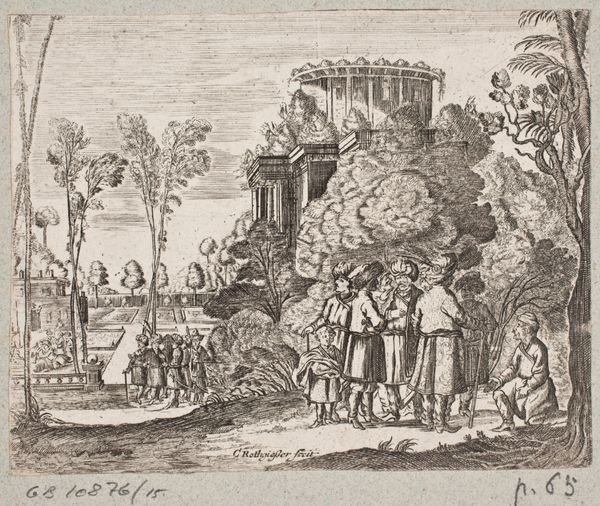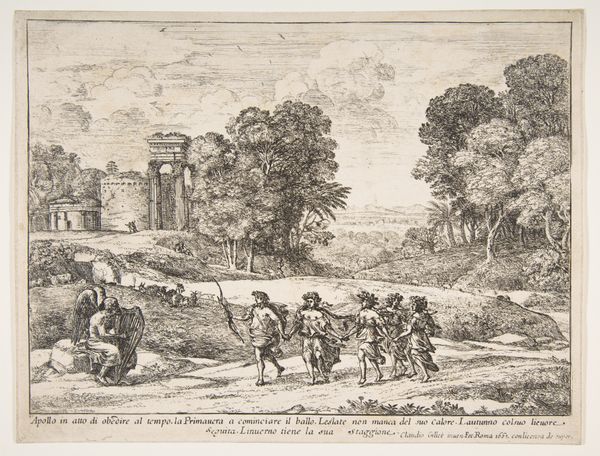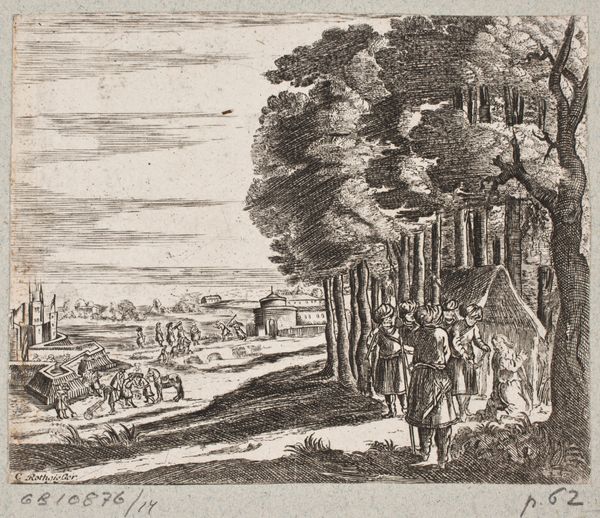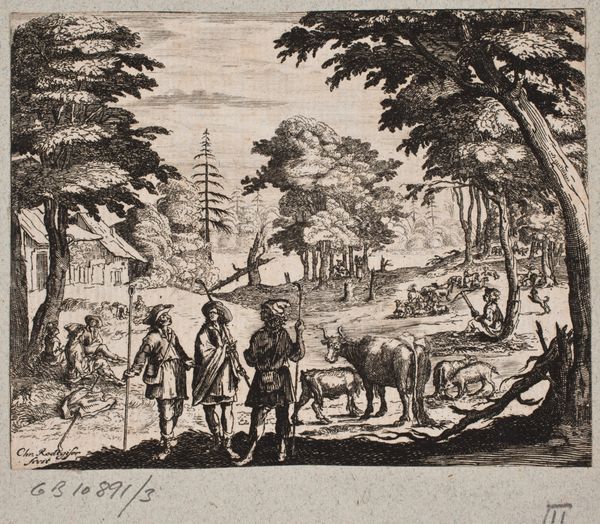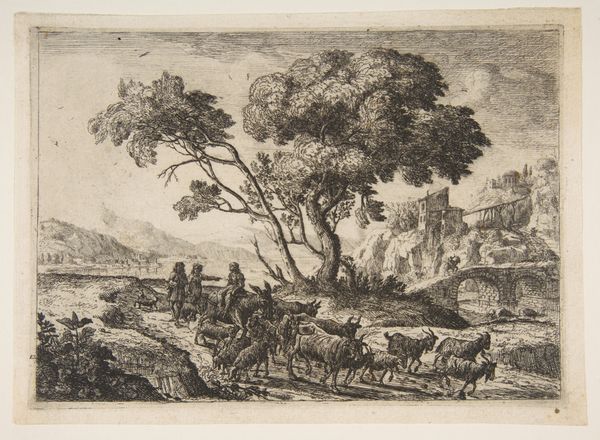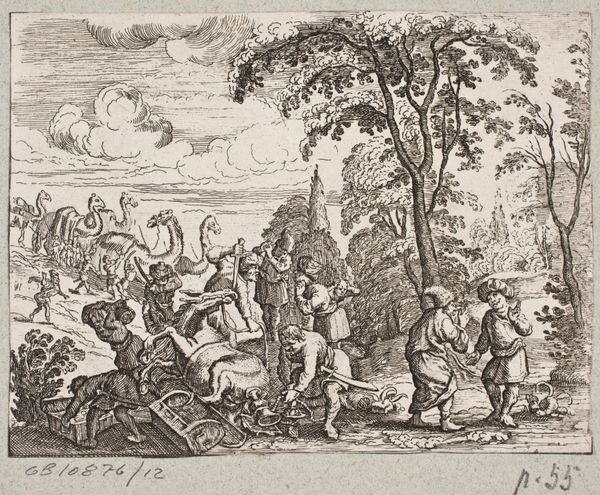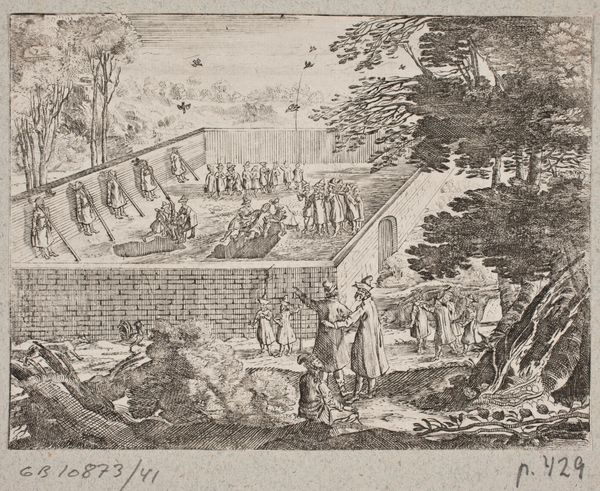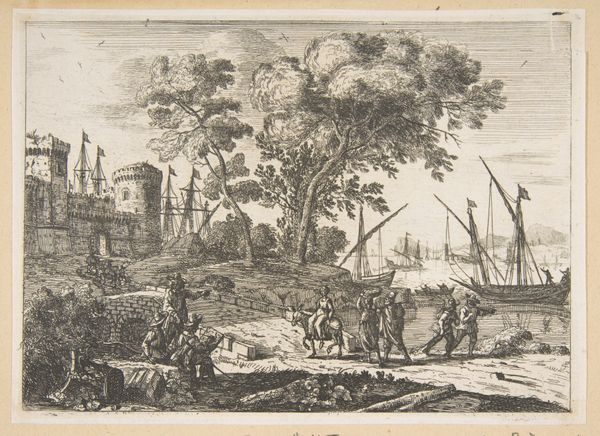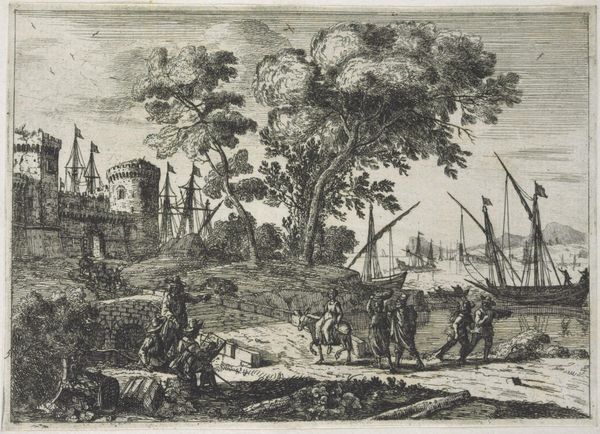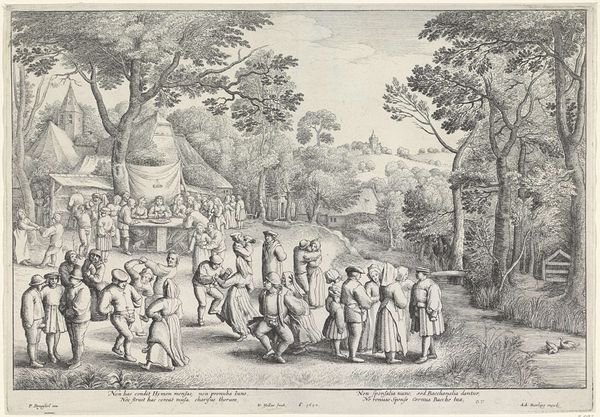![Illustration til Adam Olearius, “Persianischer Rosenthal von einem Sinnreichen Poeten Schich Saadi […]”, Schleswig 1660 by J. Muller](/_next/image?url=https%3A%2F%2Fd2w8kbdekdi1gv.cloudfront.net%2FeyJidWNrZXQiOiAiYXJ0ZXJhLWltYWdlcy1idWNrZXQiLCAia2V5IjogImFydHdvcmtzLzFlZDA3Yjc0LTJiMGQtNDRmMi1hMGJkLTJhNTZiODBjZjlhNi8xZWQwN2I3NC0yYjBkLTQ0ZjItYTBiZC0yYTU2YjgwY2Y5YTZfZnVsbC5qcGciLCAiZWRpdHMiOiB7InJlc2l6ZSI6IHsid2lkdGgiOiAxOTIwLCAiaGVpZ2h0IjogMTkyMCwgImZpdCI6ICJpbnNpZGUifX19&w=3840&q=75)
Illustration til Adam Olearius, “Persianischer Rosenthal von einem Sinnreichen Poeten Schich Saadi […]”, Schleswig 1660 1660
0:00
0:00
drawing, print, engraving
#
drawing
#
baroque
# print
#
landscape
#
figuration
#
engraving
Dimensions: 99 mm (height) x 125 mm (width) (bladmaal)
Curator: Welcome. Before us is an engraving, "Illustration til Adam Olearius, Persianischer Rosenthal von einem Sinnreichen Poeten Schich Saadi, Schleswig 1660" created by J. Muller in 1660. It was made to illustrate Adam Olearius's adaptation of Saadi's "Gulistan," or "Rose Garden," in Persian. Editor: My immediate impression is one of stark contrasts. The density of the lines creates a feeling of confinement, a miniature world caught in a moment of heightened activity. It feels both busy and still at the same time. Curator: It’s fascinating how Muller distills Persian literary tradition through a Northern European lens, reflecting the baroque fascination with the exotic. We see a European interpretation of what Persia might be. Observe the clothing, architecture, and landscape elements—each rendered with an awareness that still feels somewhat detached from first-hand experience. Editor: I’m drawn to the technical aspects. The density of the engraving is really remarkable when you consider the fine lines achieved. Think about the labor involved in creating this matrix. Each stroke would have required painstaking control and a deep understanding of the material properties of the metal plate and the etching tools. What sort of workshop did Muller have access to, and what other sorts of production shaped the aesthetics we see here? Curator: Absolutely. And beyond just a scene from a Persian garden, this image presents certain power dynamics at play. The gestures, the positioning of figures—do you notice how the figures on the right seem to be enforcing something on those in the center and left, with gestures of enforcement, punishment, or dominance? These are deeply human themes rendered within a very specific, culturally informed vocabulary. Editor: Thinking materially again, this illustration accompanied a book; an object that was circulated widely to bourgeois European readers who then had the power to re-create a fantasized experience of foreign lands, enabled by industrial engraving practices. Curator: Indeed. The visual vocabulary speaks to ideas about the nature of governance, cultural exchange, and perception in that historical moment. A lot of potent messaging conveyed with relatively limited and standardized technical materials. Editor: Ultimately, this work reveals the beautiful tension inherent in the convergence of craftsmanship, text, and cultural imaginaries—something to consider when pondering cross-cultural understanding. Curator: I agree. This print highlights the layered nature of interpretation and how art serves as a powerful vehicle for cultural dialogue across time and space.
Comments
No comments
Be the first to comment and join the conversation on the ultimate creative platform.
